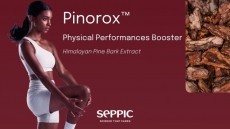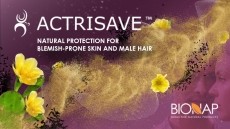Edible flowers can contribute to daily dose of vitamin E, study suggests

Concurrent with the age of Instagram and social media food photography, edible flowers have been making appearances on salads, soups, meat dishes, and more—mainly as garnish.
But might they also have beneficial nutritive value? Researchers affiliated with the Polytechnic Institute of Bragança, Porto University, and the University of Aveiro in Portugal analyzed the phytochemical composition of Borago officinalis L. and Centaurea cyanus L, colloquially known as borage and centaurea, which are two popular edible flowers
For the petals of borage and centaurea, the researchers argued that “daily consumption of edible flowers may contribute to supplying some macronutrients, vitamins, and organic acids to the human diet.”
In fact, their analysis led them to argue that consumption of borage and centaurea petals can contribute to the daily recommended dose of vitamin E (mostly alpha-tocopherols), based on a 100 g dry weight of each flower petal at all flowering stages, they wrote in their paper, due for publication in the September issue of Food Research International.
“The commercial value of edible flowers is increasing in the food sector, mostly due to consumer' interest in natural products, new ingredients with potential health benefits, and the aesthetic benefits of their use in food and beverages,” they added.
What’s in a flower?
The researchers analyzed flower petals collected from the greenhouse of the School of Agriculture of the Polytechnic Institute of Bragança, harvested at different stages of development (tight bud stage, mature bud stage, and fully open).
They then analyzed content of dietary fiber, carbohydrates, fat, protein, fatty acids, vitamin E, and carotenoids—which is a pigment compound that has been linked to eye health benefits and more.
The nutritive value of both flowers were quite similar. The main differences were that centaurea had higher values of energy (calories) and total dietary fiber, while borage showed higher fatty-acids and carotenoids.
Looking at true petals alone, without the bud, borage actually had the lowest values of total carotenoids.
“Despite the lower amounts of some compounds…These characteristics may therefore encourage the use of edible flowers (whole flower and petals) for human consumption,” they concluded.
Flower Power
How have centaurea and borage petals been used culinarily? According to the researchers:
"Centaurea (Centaurea cyanus L.), also called ‘blue cornflower’ or ‘bachelor's button’, is a plant native to Europe. Its flowers have no fragrance, but they have a sweet-to-spicy clove-like flavor. Centaurea petals are ideal for mixing with other flowers to make dishes more attractive, for sprinkling over salads, or to be used as an ingredient in tea.
Borage (Borago officinalis L.) is an annual herb, that is native to some parts of the Mediterranean region, and is cultivated for medicinal and culinary uses, but primarily for borage seed oil. Borage flowers are blue and on rare occasions appear white or pink. Petals have a cucumber-like taste and the stamens add a hint of sweetness. The flowers are used in vegetable dishes and fruit salads, to garnish soups or decorate desserts, as well as in ice cubes ."
Source: Food Research International
Published online ahead of print, https://doi.org/10.1016/j.foodres.2019.05.014
“Phytochemical characterization of Borago officinalis L. and Centaurea cyanus L. during flower development”
Authors: L. Fernandes, et al.

















